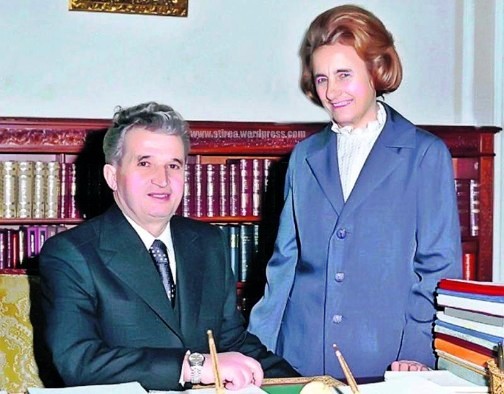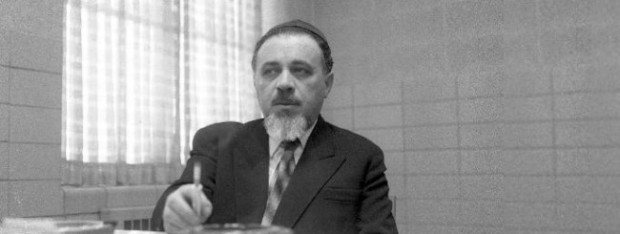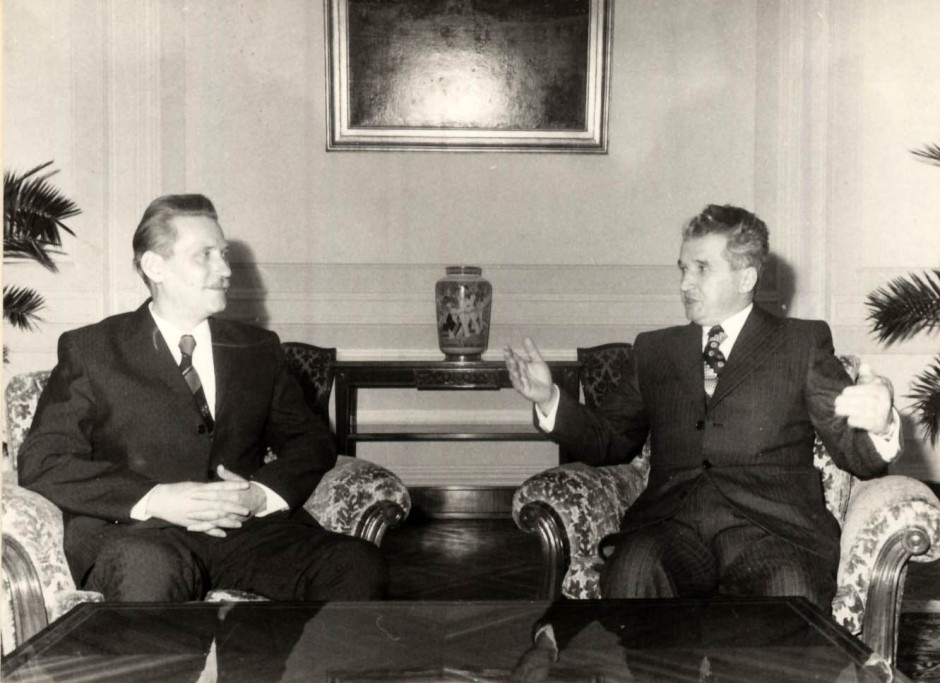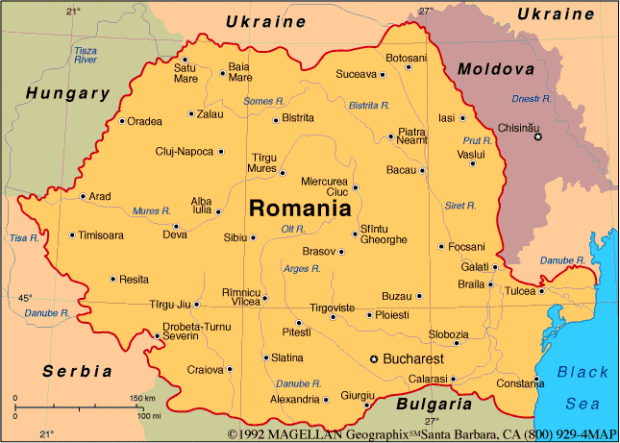This autumn marks a quarter-century since the demise of the Communist dictatorships in central and eastern Europe. It all began on Sept. 11, 1989, when Hungary, which had opened its border with Austria four months earlier, gave permission for thousands of East Germans who had arrived on “vacations” to leave the country, in order to head for West Germany.
It was the first time one of the Warsaw Pact nations broke from the practice of blocking citizens of Communist nations from going to the West. Suddenly, the Iron Curtain had been breached.
This quickly had a domino effect, and one after another of these regimes would collapse over the next few months.
Most of the transitions were bloodless, with one terrible exception – Romania. (The dissolution of Yugoslavia and its subsequent descent into civil war and ethnic cleansing was a different matter, and happened in the post-Communist period.)
Why was the Romanian case so different? Because the country’s long-time despot, Nicolae Ceausescu, in power since 1965, had cultivated an image of himself as a great leader and came to believe it.
Unlike the other, relatively drab, Communist satraps in the region, Ceausescu had developed a “cult of personality” that rivaled those of Joseph Stalin in the Soviet Union, Mao Zedong in China, and Kim Il-sung in North Korea.
The future “genius of the Carpathians,” as he called himself, was born in 1918 to a peasant family in what was, before World War II, a backward Balkan kingdom. A Communist, he spent many of his formative years in prison.
While in prison, Ceausescu had met Gheorghe Gheorghiu-Dej, an influential revolutionary who was installed as ruler of the country by the Soviets when they occupied Romania after the war. Just before Gheorghiu-Dej died of cancer in 1965, he tapped Ceausescu as his successor.
As he consolidated his power, Ceausescu became ever more enamoured of himself. He and his wife Elena — always referred to as “Comrade Academician Doctor Engineer Elena Ceausescu” — began to treat themselves as demigods.

Elena promoted her own fraudulent reputation as a great scientist, and, though barely educated, made sure that the University of Bucharest awarded her a PhD in chemistry. The contents of her many scientific papers were penned by others.
Meanwhile, her husband by the 1980s had become the “torch bearer among torch bearers,” a leader as “unique as a mountain peak,” and a man of legendary brilliance. The Communist Party was placed in the hands of sycophants chosen for their abject loyalty to their leader, who was the very epitome of the Romanian spirit.
Romania was a maverick among the Communist states of eastern Europe, pursing an independent foreign policy from that of the Soviet Union. In the 1960s Ceausescu ended Romania’s active participation in the Warsaw Pact military alliance and denounced the invasion of Czechoslovakia in 1968.
The country also reached out to western powers, and both presidents Charles de Gaulle of France and Richard Nixon of the U.S. visited the country in the late 1960s. In 1973, Ceausescu came to Washington, and he would be rewarded with a “most favored nation” trade status two years later.
Following the 1967 Arab-Israeli war, Bucharest remained the only eastern bloc country to maintain diplomatic relations with Israel, something which irritated Moscow. Indeed, Bucharest raised its diplomatic representation to embassy level in 1969. In May 1972, Israeli Prime Minister Golda Meir paid a state visit to Romania, which refused to censure Israel during the 1973 Yom Kippur War.
Romania retained a sizable Jewish population during the Cold War, and Ceausescu was able to parlay that to his advantage as well. In 1948, Moses Rosen was elected chief rabbi of Romania, and over the next 45 years, he managed the delicate, and controversial, task of maintaining a beneficial relationship with the regime, while helping it cultivate good relations with world leaders.

He was a loyal lackey and helped Romania maintain a positive image abroad, in contrast to other Communist countries.
Rosen played a key role in promoting relations between Israel and Romania, making repeated trips to Israel from the 1960s on. In the 1970s, as unofficial goodwill ambassador for Romania in Washington, he began forging close links with leading western Jews and international Jewish organizations.
In 1967, he succeeded in getting government approval for the Jewish Joint Distribution Committee to operate in the country, helping to maintain Jewish communal life. He also helped facilitate the emigration of Romanian Jews to Israel — though Ceausescu exacted a price: international Jewish organizations paid a secret “ransom” (in U.S. dollars) for every Jew allowed to leave.
Meanwhile, while the country was increasingly mismanaged domestically, with impoverished ordinary Romanians going without proper food or shelter, there was little overt opposition to Ceausescu, partly because of the atmosphere of fear created by the dreaded secret police, the Securitate, which had spies and informers everywhere.
By 1985, it employed some 11,000 agents and had half a million informers in a country of 22 million people.
Any criticism was ruthlessly crushed. Even typewriters had to be registered with the government, to prevent circulation of anti-regime pamphlets. This was a truly totalitarian state.
Giving full vent to his megalomania, Ceausescu, in 1984, razed scores of buildings in the historic centre of Bucharest to begin construction of his massive House of the Republic, a huge palace that would serve as a monument to himself and his wife. The largest administrative building in the world, at 3.7 million square feet, it today houses the Romanian parliament.
But the winds of change sweeping through eastern Europe did not spare Romania. The country’s Hungarian minority in Transylvania, increasingly persecuted by Ceausescu, erupted into open revolt in December 1989. Dissent soon spread, the Romanian army turned against its master, and Ceausescu’s regime disintegrated with amazing swiftness.
Having been out of touch with reality for decades, Nicolae and Elena were totally unprepared for their political downfall. On Dec. 21, addressing a mass rally in Bucharest, they were astonished when the crowd booed and called for their removal.
Though the Securitate remained loyal to the Ceausescus and fought the army, they could not prevail. The couple’s ignominious end came on December 25, 1989, three days after they tried to escape the country. They were captured, tried, sentenced to death, shot by a firing squad, and quickly buried, all within a few hours.
Ion Ilescu emerged as leader of the anti-Communist National Front. He would serve as the first democratically elected president of Romania from 1990 until 1996, and again from 2000 until 2004.
Ilescu admitted in 2009 that the trial was “quite shameful, but necessary” in order to end the state of near-anarchy that had gripped the country.
Romanians may never see their likes again — and that’s a good thing.
Henry Srebrnik is a professor of political science at the University of Prince Edward Island.


